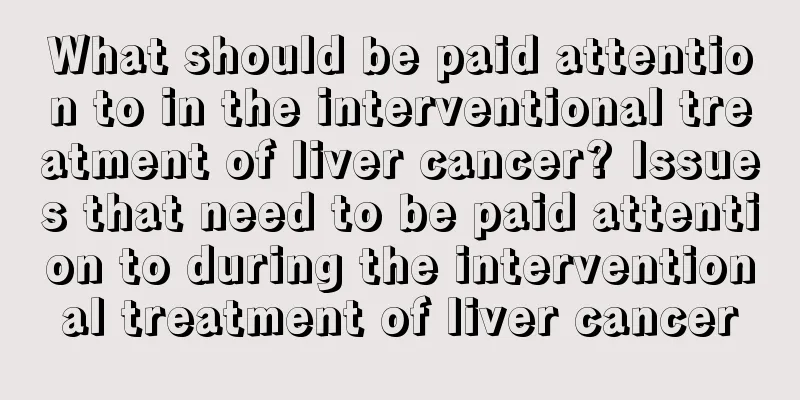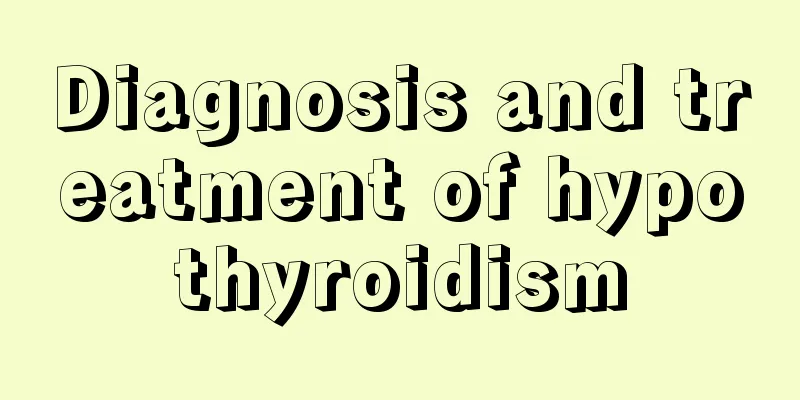What should be paid attention to in the interventional treatment of liver cancer? Issues that need to be paid attention to during the interventional treatment of liver cancer

|
Perfusion chemotherapy is commonly used in interventional treatment of liver cancer. It is a treatment method that concentrates forces to attack tumors. That is, drugs are directly injected into the local liver cancer through an arterial catheter. It is to send the catheter through the peripheral artery to the hepatic artery, and then directly inject the drug into the lesion in the liver through the catheter. Compared with traditional intravenous administration (infusion), it has lower systemic toxicity; at the same time, due to the use of selective arterial perfusion, the drug concentration in the local liver cancer can be increased. Without increasing the dosage, the drug concentration in liver cancer tissue can be 5-20 times higher than that in normal tissue, thereby effectively improving the treatment effect. Issues to be noted during surgery: Because the blood supply arteries of liver cancer can mutate, the order of angiography should be noted for patients receiving treatment for the first time. Do not only perform celiac artery or superselective hepatic artery angiography, but also perform superior mesenteric artery, celiac artery, and phrenic artery angiography in sequence, and then perform superselective blood supply artery angiography according to the need for angiography. And compare the intraoperative contrast agent situation with the preoperative CT and MRI examination results, and analyze carefully to avoid missing multiple blood supply arteries that may exist. Standardized intraoperative operation not only guarantees the effect of interventional treatment, but also creates good conditions for subsequent comprehensive treatment, while reducing the occurrence of complications. During embolization, the following principles can be followed: ① Use peripheral embolic agents for peripheral embolization first, and then central embolization. ② The amount of iodized oil should be sufficient, especially during the first embolization. ③ Do not completely occlude the proper hepatic artery to facilitate TAE again, but the exception is those with obvious hepatic artery-portal vein fistula. ④ If there are two or more arteries supplying the liver tumor, each artery should be embolized one by one to devascularize the tumor. ⑤ For patients with smaller hepatic artery-portal vein fistulas, iodized oil embolization can still be used, but it should be done with caution. ⑥ Try to avoid the embolic agent entering non-target organs. When performing TAI, the amount of chemotherapy drugs used in perfusion and embolization should be allocated according to the blood supply characteristics of liver cancer. |
Recommend
The tooth broke and a small piece fell off
In daily life, we often encounter such problems. ...
How long does it take to soak dried scallops
Dried scallops are dried products of scallops wit...
How to quickly overcome nervous head shaking
Many people will experience various minor problem...
What are the symptoms of bile duct cancer? Six symptoms to watch out for, two preventive measures to be in place
Patients with bile duct cancer have symptoms of b...
What to do if lips get inflamed
Everyone has experienced getting angry in their l...
Skin tends to dry out in summer. 8 hydrating tips to moisturize your body
In spring and summer, the skin's metabolism b...
What are the symptoms and manifestations of skin cancer
Since many patients do not know enough about skin...
How much does early kidney cancer surgery cost
Among kidney diseases, there are three most serio...
What is the reason why urine is yellow?
Everyone knows that the purpose of excreting urin...
The principle of ginger juice to relieve itching
Ginger is a vegetable that people often use in th...
Things to note when self-examining breast cancer
Breast self-examination can help with early detec...
How is gallbladder cancer diagnosed?
With the progress of the times, people's livi...
What are the symptoms of prostate cancer?
Among various malignant tumors, everyone must hav...
How is nasopharyngeal carcinoma clinically staged
How is nasopharyngeal carcinoma classified? There...
4 folk remedies for treating onychomycosis on feet
The causes of onychomycosis on the feet include p...









